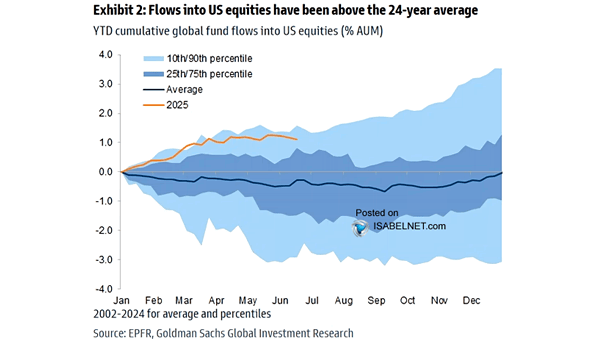Effective Fed Funds Rate and S&P 500 Index Return vs. 10-Year U.S. Treasury Bond Return
Effective Fed Funds Rate and S&P 500 Index Return vs. 10-Year U.S. Treasury Bond Return Is 2024 poised to be the year for bonds, given that the median relative performance spread between stocks and bonds in previous Fed cutting cycles has been 25%? Image: Morgan Stanley Wealth Management


